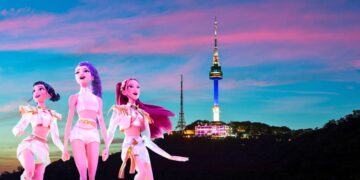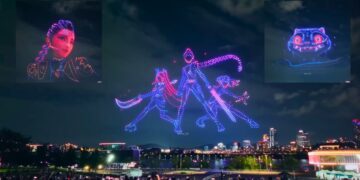Watching “KPop Demon Hunters” isn’t just about falling into a fantasy—it’s about recognizing the pulse of a culture that’s still very much alive. Beneath the shimmering idol stages and supernatural battles, the film quietly opens a door to something older: rituals that echo from Korea’s past, spirits that linger in symbols, and performances that aren’t just for show—but for survival. And if you’re traveling to South Korea, that door isn’t just on screen. It’s wide open, waiting for you. Join us as we explore all the places in South Korea to visit through the ritual rhythms of “KPop Demon Hunters”.
The Spiritual Power Behind the Spotlight: Visit Korea Through “KPop Demon Hunters”
K-pop fans may be drawn in by the glitter, but in “KPop Demon Hunters”, that glitter is doing something deeper. Every step the girl group HUNTRIX performs is rooted in gut—the Korean shamanic ritual where music, movement, and storytelling merge to connect worlds.

Now those dances forming the Honmoon? Those are beyond mere animation magic. In real life, these spiritual performances still exist—and they’re not hidden behind museum glass. You can find them in open courtyards, coastal towns, and mountainside villages where traditions live on.
If you’re the kind of traveler who wants more than just a photo op, this is your invitation to go deeper. That’s why today we’re going to guide you on a spectacular journey: to visit South Korea through the eyes of “KPop Demon Hunters”.
1. Visit a Live Shamanic Ritual (Gut) — Respectfully
In the film, the Hunters channels her energy through chants, drums, and dazzling choreography. This is not fantasy. It’s a stylized echo of the gut, led by Korea’s real-life mudang (shamans).
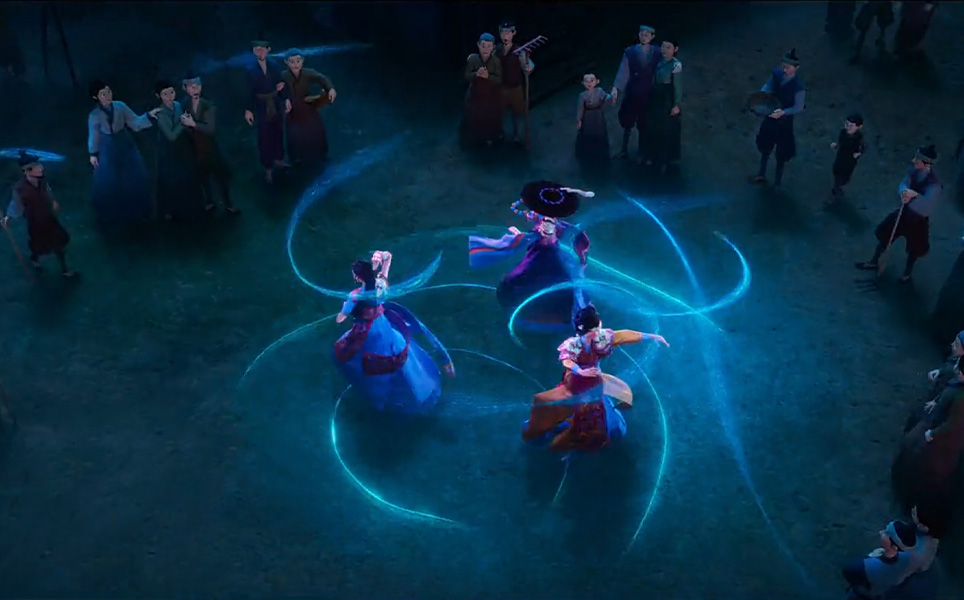
Today, you can still visit the places where you can witness the actual rituals that HUNTRIX did in “KPop Demon Hunters” in South Korea. Places like Ganghwa Island, Tongyeong, and the beautiful Seongbuk-dong in Seoul, where mudang still offer rituals to comfort spirits, bless businesses, or call upon ancestral guidance.
Yes, most are closed to tourists, but some public ceremonies, like the Jindo Sea-Parting Festival or the Seoul Traditional Performing Arts Center, offer cultural showcases that give a respectful window into these centuries-old traditions.
REMEMBER: Always approach these with humility. Unlike HUNTRIX’s concert, a gut is NOT a performance. This is a sacred act. But when witnessed correctly, it’s one of Korea’s most powerful cultural experiences.
2. Feel the Rhythm of Ritual in Korea’s Performance Halls
If HUNTRIX’s spellbinding stage battles stirred that heart-throbbing feelings as you watched “KPop Demon Hunters”, you’ll find that same energy—minus the demons, of course!—as you visit the places that showcase traditional music and dance in South Korea
At places like the National Gugak Center Seoul or Jeongdong Theater, you can visit and catch shows that fuse ancient storytelling, percussion, and elegant movement, just like what you witnessed in “KPop Demon Hunters.”
And no. These are not just tourist gimmicks. These performances are magically performed by the actual master artists who’ve trained for decades in the styles passed down through royal courts and village rituals.
Pro tip: Watch for performances featuring pansori (narrative singing), buk drumming, or masked dances like the Hahoe Byeolsingut—these forms share the same raw spiritual energy that pulses through every scene in “KPop Demon Hunters”.
3. Seek Out the Folk Art That Inspired the Film’s Spirits
Ever noticed the magpie with a tiny gat hat in the film? Yes! Derpy and Sussie are NOT just clever designs. They are very realistic references to hojakdo, traditional tiger-and-magpie folk paintings that used humor and symbolism to challenge authority.
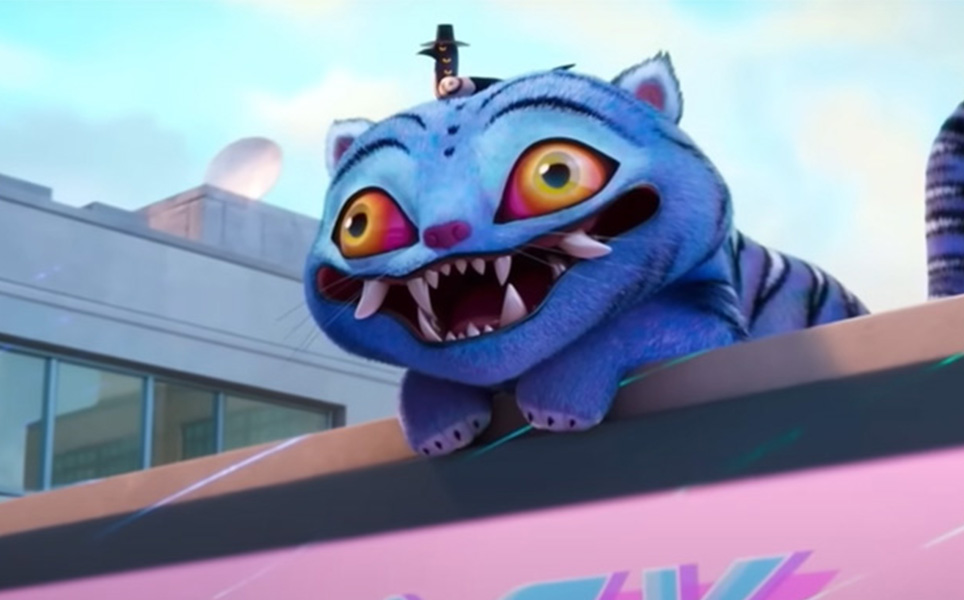
These playful, wise, and slightly chaotic images hang in hanok inns, local galleries, and even subway art installations across Korea. And if you want to see these “KPop Demon Hunters” icons up close, you can visit places like Korean Folk Painting Museum in Insa-dong, the National Folk Museum, or Jeonju’s Hanok Village galleries to your itinerary.
And in reality, Derpy and Sussie—or the hojakdo—are beyond just decorative characters. They’re protective talismans, ancestral wisdom, and cultural storytelling rolled into one. Once you spot them, you’ll start seeing echoes of it in every K-content series you love.
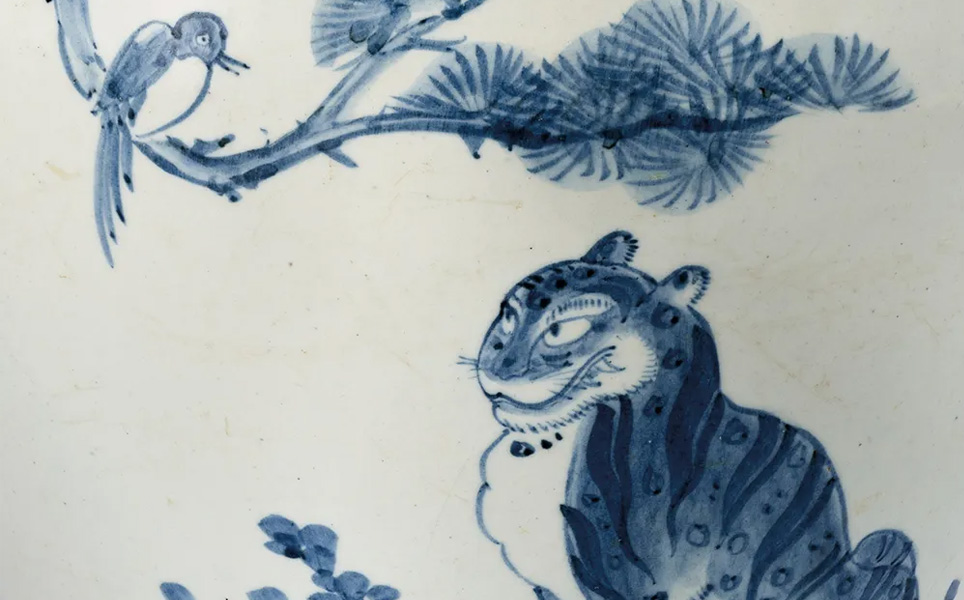
4. The Costumes Aren’t Just Style—They’re Story
Rewatch “KPop Demon Hunters” and pay attention to all the costumes in the story. Watch how the early hunters dances around in ancient costumes, and how HUNTRIX perform with stunning golden stage outfits.
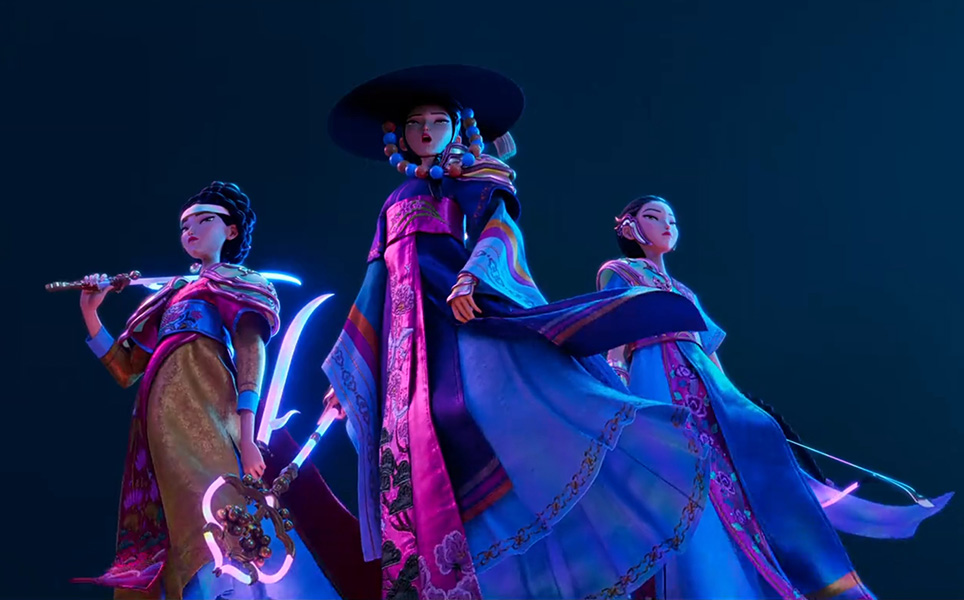
Then, take a look at how the Saja Boys captivated you in their black hanbok and gat during “Your Idol.”
These costumes? They’re beyond aesthetic choices but statements rooted in Joseon-era ceremonial wear and Confucian symbolism.
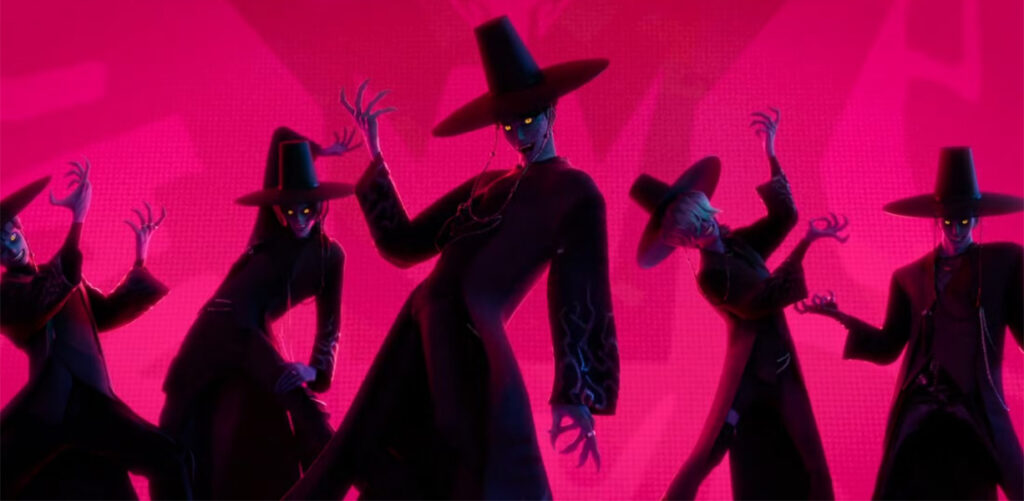
To truly understand what you saw on screen, you need to wear it—or at least walk among it.
At places like Bukchon Hanok Village, the Hanboknam experience center, or Gyeongbokgung Palace’s hanbok rentals, you can try on traditional garments and learn what each color, cut, and accessory once meant.
Now, if you want to go even deeper into the “KPop Demon Hunters” ritual costumes, you can visit places like Seok Juseon Memorial Museum at Dankook University for an academic deep dive into costume history—without the tourist gloss.
5. Visit and Walk Through the Places Where “KPop Demon Hunters” Myths Still Breathe
Lastly, the blue tiger, the spirit seal, and the royal throne backdrop are not just fantasy embellishments—they’re lifted straight from Korea’s living history.
What “KPop Demon Hunters” does so brilliantly is reminding you that myth and places to visit in South Korea are basically inseparable. You don’t have to imagine it. You can walk right into it in reality.
And here’s where to start:
Baekdudaegan Mountains – Korea’s Spiritual Backbone
Nicknamed the “spine of the Korean Peninsula,” this mountain range stretches across the country like a celestial highway. In Korean lore, it’s where divine tigers roam and spirits gather. Local legend says that tigers once protected these ridgelines—not just as animals, but as guardians of spiritual energy.
If you’re hiking or visiting national parks like Jirisan or Seoraksan, pause when you see tiger imagery carved in rock or woven into temple art. Those are the real part of Korea’s spiritual ecosystem.
Gyeongbokgung & Changdeokgung Palaces – Royal Realms with Hidden Symbolism
In the film’s final stage scene, HUNTRIX performs in front of a glowing red-blue landscape. That’s actually based on the Ilwol Obongdo (일월오봉도), the Sun, Moon, and Five Peaks screen that sat behind every Joseon king’s throne.
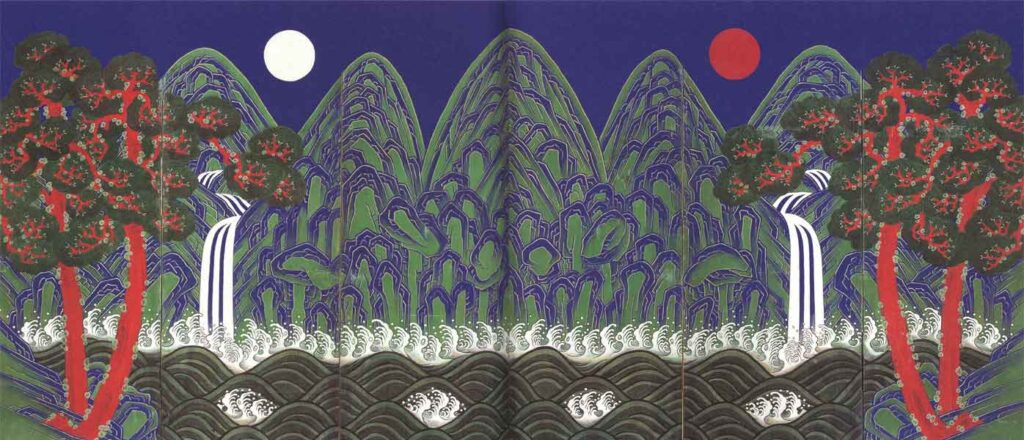
When you visit Gyeongbokgung Palace, go beyond the photos and actually stand before this screen. You’ll see the very pattern that inspired the film’s royal stage—and begin to understand how deep Korean symbolism runs.
Pro tip: arrive early for the changing of the guard ceremony, where ceremonial dress and court music recreate that blend of myth and ritual.
Jeju Island’s Shrines – The Shamanic Frontier
Jeju is unlike anywhere else in Korea. Its Haenyeo divers and volcanic landscapes get the headlines, but it’s also one of the last strongholds of traditional shamanic belief.
Scattered across the island are small bonyo-dang (village shrines) and stone altars where local shamans still perform gut to appease sea gods and guardian spirits.
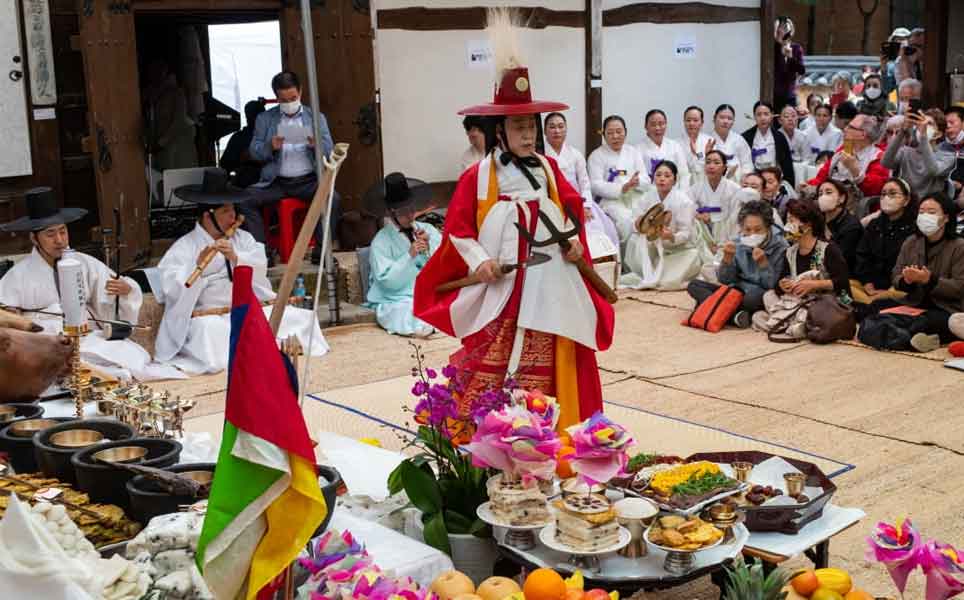
Now, if you’re curious, visit places like Jeju Folklore and Natural History Museum or Sanbanggulsa Templein South Korea, where stories of spirit seals and elemental balance, like the Honmoon in “KPop Demon Hunters”, feel strikingly familiar.
Andong Hahoe Folk Village – Korea’s Living Ritual Stage
If there’s one place that feels like walking into a scene from “KPop Demon Hunters”, it’s Andong. The Hahoe Village, a UNESCO-listed site, is more than just photogenic hanok houses.

Here, villagers still hold Byeolsingut talchum—a masked shamanic dance meant to chase off evil and restore balance. You’ll find Confucian houses with ancestral tablets, masks that represent social satire and spirit lore, and a river that locals say holds energy channels. It’s Korea’s past, still breathing.
Visit These Iconic Places and Let the Journey of “KPop Demon Hunters” Continue Offscreen in South Korea
Finally, even when this Netflix animation is not Korean made, “KPop Demon Hunters” movie is beyond just a mere fantasy. It’s a map and a mythological mixtape.
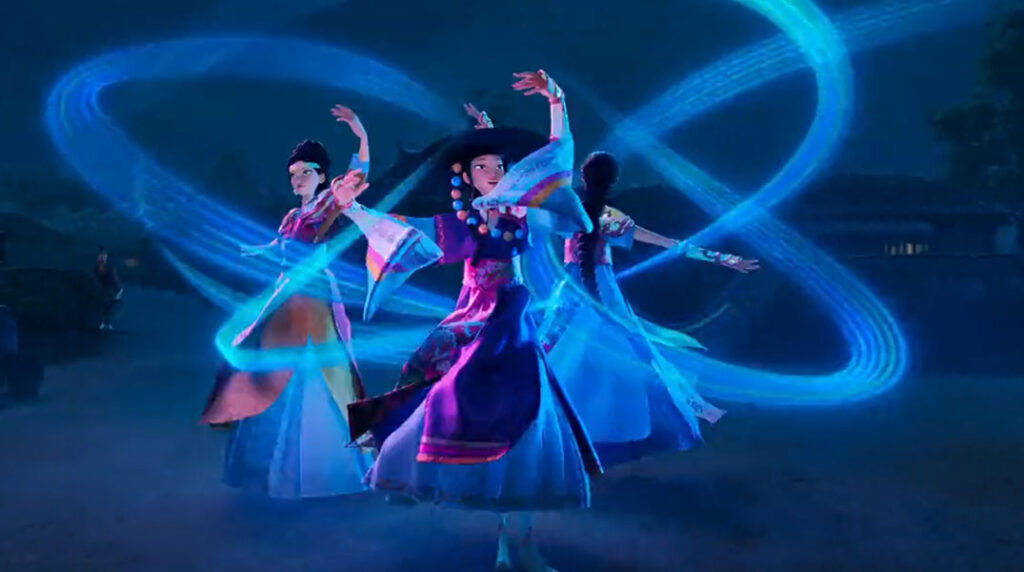
And beyond everything, “KPop Demon Hunters” is a cultural invitation for overseas travelers to visit all the iconic places and experience South Korea beyond the K-pop merch and neon-lit cafés.
So if you’re planning a trip to South Korea, let the stories of “KPop Demon Hunters” guide you. Walk the palace paths. Hear the drums that once calmed spirits. Watch a shaman dance and feel the world shift a little.
In the end, every performance, every ritual, every shrine—it’s not just history. It’s a heartbeat. One that’s still pulsing. And now, it’s calling you.
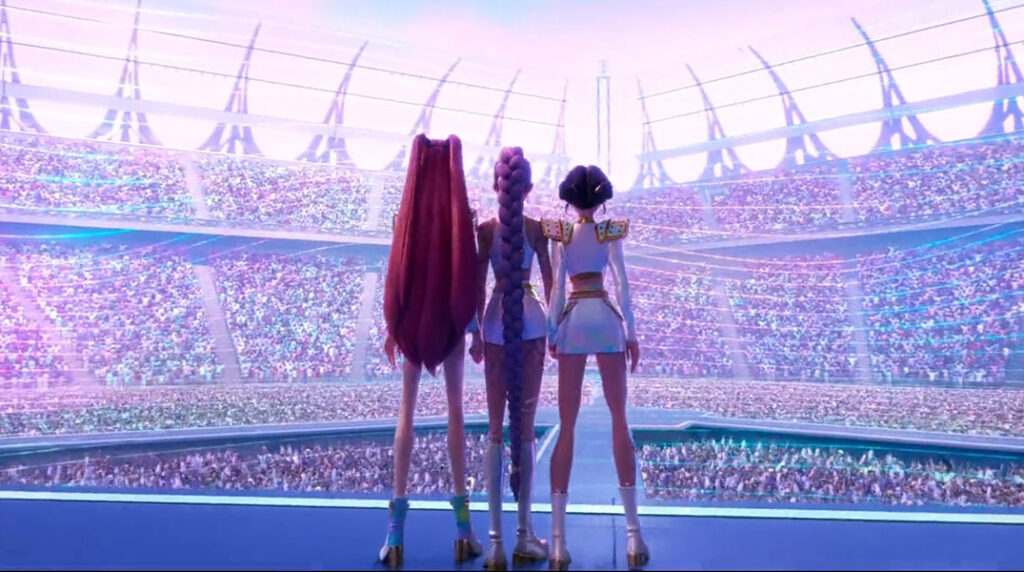
Related Posts
6,751 total views, 3 views today




